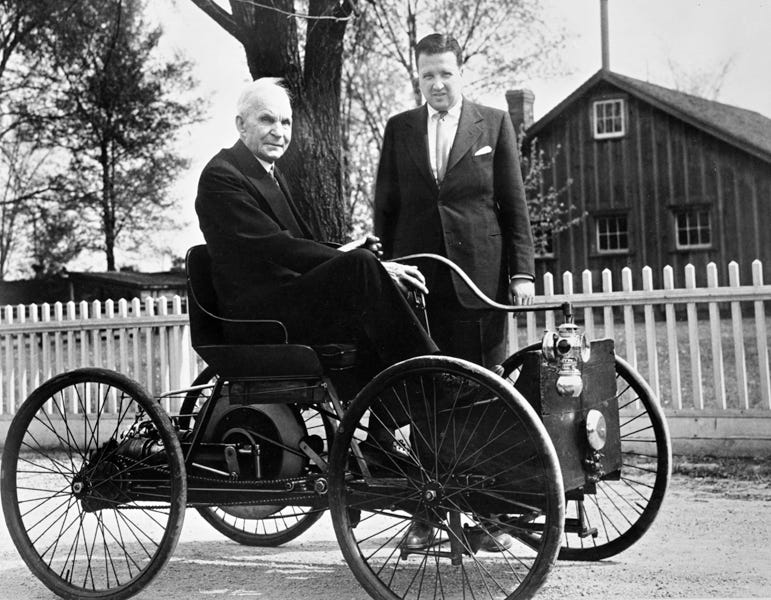Quadricycle: The Evolution of the Automobile
The Quadricycle, an early model car, played a crucial role in the evolution of the automobile. This four-wheeled vehicle was designed by Henry Ford in 1896, and its introduction marked a turning point in the automotive industry. In this article, we will explore the design and features of the first Ford Quadricycle, its importance in the development of the automobile, and how it compared to other early cars of the time.
Design and Features of the First Ford Quadricycle
Henry Ford, a self-taught engineer, designed and built the Quadricycle in 1896. The Quadricycle was a simple vehicle, consisting of a four-wheeled frame, a small gasoline engine, and a chain-drive system. The engine was mounted at the rear of the vehicle, and the two rear wheels were driven by a chain. The front wheels were connected to the steering mechanism, which was operated by a tiller.
The Quadricycle's engine was a two-cylinder, four-horsepower gasoline engine that could reach a top speed of about 20 miles per hour. The vehicle had a wooden frame, with wire-spoked wheels and solid rubber tires. The Quadricycle was operated by a single person who sat on a leather seat in the open air.
Importance of the Quadricycle in the Development of the Automobile
The Quadricycle played a significant role in the development of the automobile. It was one of the first gasoline-powered vehicles to be built in America, and it paved the way for the development of the modern automobile. Henry Ford's Quadricycle demonstrated that gasoline engines could power small, lightweight vehicles, and it showed that a simple, affordable car could be built using mass production techniques.
The Quadricycle was also important because it helped establish Henry Ford's reputation as an automotive innovator. Ford's success with the Quadricycle led him to establish the Ford Motor Company in 1903, which went on to become one of the most successful and influential companies in the world.
Ford's Quadricycle vs. Other Early Cars of the Time
The Quadricycle was not the first gasoline-powered vehicle to be built, but it was one of the most significant. At the time, there were other vehicles being developed that used gasoline engines, including the Duryea Motor Wagon, which was built by brothers Charles and Frank Duryea in 1893. However, the Duryea was a much more complicated vehicle, with a larger engine and more complex transmission system.
Compared to other early cars of the time, the Quadricycle was a simple and affordable vehicle. It was designed to be easy to operate and maintain, and it was built using mass production techniques that allowed it to be produced quickly and efficiently. The Quadricycle was also much lighter than other cars of the time, which made it more fuel-efficient and easier to handle.
The Quadricycle was a simple, affordable vehicle that played a significant role in the development of the automobile. It was designed and built by Henry Ford in 1896, and it helped establish his reputation as an automotive innovator. The Quadricycle demonstrated that gasoline engines could power small, lightweight vehicles, and it paved the way for the development of the modern automobile. Although there were other gasoline-powered vehicles being developed at the time, the Quadricycle was one of the most significant because of its simplicity and affordability.

Comments
Post a Comment